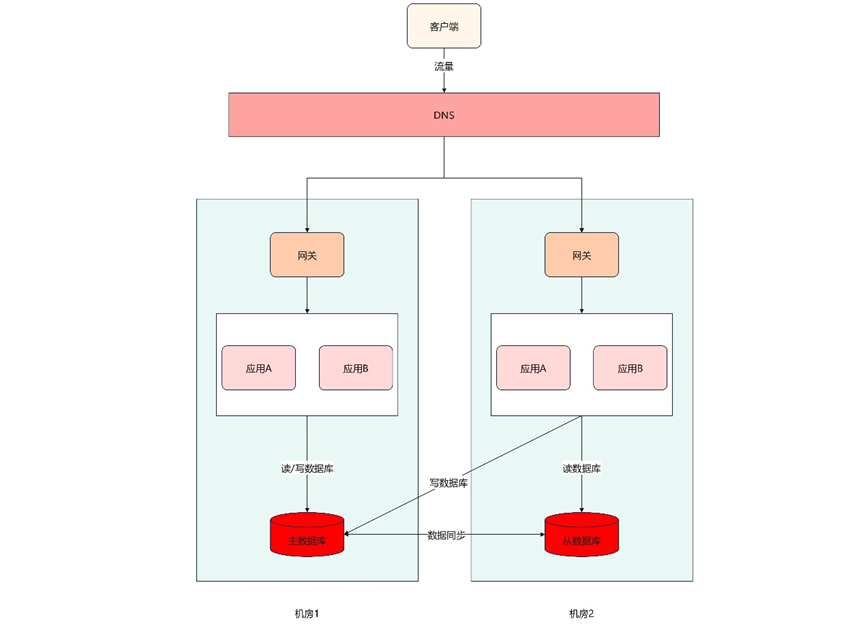@SpringBootApplication详解(Spring Boot启动原理)
本文来说下Spring Boot 中的Starters文章目录概述概述Starters 可以理解为启动器,它包含了一系列可以集成到应用里面的依赖包,你可以一站式集成 Spring 及其他技术,而不需要到处找示例代码和依赖包。如你想使用 Spring JPA 访问数据库,只要加入 spring-boot-starter-data-jpa 启动器依赖就能使用了。 Starters 包含了许多项目中需要
本文来说下Spring Boot中的自动装配机制。SpringBoot最强大的功能就是把我们常用的场景抽取成了一个个starter(场景启动器),通过SpringBoot为我们提供的这些场景启动器,我们再进行少量的配置就能使用相应的功能。
文章目录
概述
如果我们想要使用传统意义上的 Spring 应用,那么需要配置大量的 xml 文件才可以启动,而且随着项目的越来越庞大,配置文件也会越来越繁琐,这在一定程度上也给开发者带来了困扰,于是 SpringBoot 就应运而生了。

什么是SpringBoot
2012 年 10 月,一个叫 Mike Youngstrom 的人在 Spring Jira 中创建了一个功能请求,要求在 Spring Framework 中支持无容器 Web 应用程序体系结构,提出了在主容器引导 Spring 容器内配置 Web 容器服务。这件事情对 SpringBoot 的诞生应该说是起到了一定的推动作用。
SpringBoot 的诞生就是为了简化 Spring 中繁琐的 XML 配置,其本质依然是 Spring 框架,使用 SpringBoot 之后可以不使用任何 XML 配置来启动一个服务,使得我们在使用微服务架构时可以更加快速地建立一个应用。
SpringBoot 具有以下特点:
- 创建独立的 Spring 应用。
- 直接嵌入了 Tomcat、Jetty 或 Undertow(不需要部署 WAR 文件)。
- 提供了固定的配置来简化配置。
- 尽可能地自动配置 Spring 和第三方库。
- 提供可用于生产的特性,如度量、运行状况检查和外部化配置。
- 完全不需要生成代码,也不需要 XML 配置。
SpringBoot 这些特点中最重要的两条就是约定优于配置和自动装配。
约定优于配置
SpringBoot 的约定由于配置主要体现在以下方面:
- maven 项目的配置文件存放在 resources 资源目录下。
- maven 项目默认编译后的文件放于 target 目录。
- maven 项目默认打包成 jar 格式。
- 配置文件默认为 application.yml 或者 application.yaml 或者 application.properties。
- 默认通过配置文件 spring.profiles.active 来激活配置。
自动装配
自动装配是什么及作用
springboot的自动装配实际上就是为了从spring.factories文件中获取到对应的需要进行自动装配的类,并生成相应的Bean对象,然后将它们交给spring容器来帮我们进行管理。下面详细分析。
自动装配则是 SpringBoot 的核心,自动装配是如何实现的呢?为什么我们只要引入一个 starter 组件依赖就能实现自动装配呢,接下来就让我们一起来探讨下 SpringBoot 的自动装配机制。
相比较于传统的 Spring 应用,搭建一个 SpringBoot 应用,我们只需要引入一个注解 @SpringBootApplication,就可以成功运行。
我们就从 SpringBoot的这个注解开始入手,看看这个注解到底替我们做了什么。
@SpringBootApplication注解源码
//
// Source code recreated from a .class file by IntelliJ IDEA
// (powered by FernFlower decompiler)
//
package org.springframework.boot.autoconfigure;
import java.lang.annotation.Documented;
import java.lang.annotation.ElementType;
import java.lang.annotation.Inherited;
import java.lang.annotation.Retention;
import java.lang.annotation.RetentionPolicy;
import java.lang.annotation.Target;
import org.springframework.boot.SpringBootConfiguration;
import org.springframework.boot.context.TypeExcludeFilter;
import org.springframework.context.annotation.ComponentScan;
import org.springframework.context.annotation.Configuration;
import org.springframework.context.annotation.FilterType;
import org.springframework.context.annotation.ComponentScan.Filter;
import org.springframework.core.annotation.AliasFor;
@Target({ElementType.TYPE})
@Retention(RetentionPolicy.RUNTIME)
@Documented
@Inherited
@SpringBootConfiguration
@EnableAutoConfiguration
@ComponentScan(
excludeFilters = {@Filter(
type = FilterType.CUSTOM,
classes = {TypeExcludeFilter.class}
), @Filter(
type = FilterType.CUSTOM,
classes = {AutoConfigurationExcludeFilter.class}
)}
)
public @interface SpringBootApplication {
@AliasFor(
annotation = EnableAutoConfiguration.class
)
Class<?>[] exclude() default {};
@AliasFor(
annotation = EnableAutoConfiguration.class
)
String[] excludeName() default {};
@AliasFor(
annotation = ComponentScan.class,
attribute = "basePackages"
)
String[] scanBasePackages() default {};
@AliasFor(
annotation = ComponentScan.class,
attribute = "basePackageClasses"
)
Class<?>[] scanBasePackageClasses() default {};
@AliasFor(
annotation = Configuration.class
)
boolean proxyBeanMethods() default true;
}
核心的3个注解

前面四个不用说,是定义一个注解所必须的,关键就在于后面三个注解:@SpringBootConfiguration,@EnableAutoConfiguration,@ComponentScan。也就是说我们如果不用 @SpringBootApplication 这个复合注解,而是直接使用最下面这三个注解,也能启动一个 SpringBoot 应用。
@SpringBootConfiguration 注解
这个注解我们点进去就可以发现,它实际上就是一个 @Configuration 注解,这个注解大家应该很熟悉了,加上这个注解就是为了让当前类作为一个配置类交由 Spring 的 IOC 容器进行管理,因为前面我们说了,SpringBoot 本质上还是 Spring,所以原属于 Spring 的注解 @Configuration 在 SpringBoot 中也可以直接应用。
@SpringBootConfiguration 注解源码
//
// Source code recreated from a .class file by IntelliJ IDEA
// (powered by FernFlower decompiler)
//
package org.springframework.boot;
import java.lang.annotation.Documented;
import java.lang.annotation.ElementType;
import java.lang.annotation.Retention;
import java.lang.annotation.RetentionPolicy;
import java.lang.annotation.Target;
import org.springframework.context.annotation.Configuration;
import org.springframework.core.annotation.AliasFor;
@Target({ElementType.TYPE})
@Retention(RetentionPolicy.RUNTIME)
@Documented
@Configuration
public @interface SpringBootConfiguration {
@AliasFor(
annotation = Configuration.class
)
boolean proxyBeanMethods() default true;
}
@ComponentScan 注解
这个注解也很熟悉,用于定义 Spring 的扫描路径,等价于在 xml 文件中配置 context:component-scan,假如不配置扫描路径,那么 Spring 就会默认扫描当前类所在的包及其子包中的所有标注了 @Component,@Service,@Controller 等注解的类。
@ComponentScan 注解源码
//
// Source code recreated from a .class file by IntelliJ IDEA
// (powered by FernFlower decompiler)
//
package org.springframework.context.annotation;
import java.lang.annotation.Documented;
import java.lang.annotation.ElementType;
import java.lang.annotation.Repeatable;
import java.lang.annotation.Retention;
import java.lang.annotation.RetentionPolicy;
import java.lang.annotation.Target;
import org.springframework.beans.factory.support.BeanNameGenerator;
import org.springframework.core.annotation.AliasFor;
@Retention(RetentionPolicy.RUNTIME)
@Target({ElementType.TYPE})
@Documented
@Repeatable(ComponentScans.class)
public @interface ComponentScan {
@AliasFor("basePackages")
String[] value() default {};
@AliasFor("value")
String[] basePackages() default {};
Class<?>[] basePackageClasses() default {};
Class<? extends BeanNameGenerator> nameGenerator() default BeanNameGenerator.class;
Class<? extends ScopeMetadataResolver> scopeResolver() default AnnotationScopeMetadataResolver.class;
ScopedProxyMode scopedProxy() default ScopedProxyMode.DEFAULT;
String resourcePattern() default "**/*.class";
boolean useDefaultFilters() default true;
ComponentScan.Filter[] includeFilters() default {};
ComponentScan.Filter[] excludeFilters() default {};
boolean lazyInit() default false;
@Retention(RetentionPolicy.RUNTIME)
@Target({})
public @interface Filter {
FilterType type() default FilterType.ANNOTATION;
@AliasFor("classes")
Class<?>[] value() default {};
@AliasFor("value")
Class<?>[] classes() default {};
String[] pattern() default {};
}
}
@EnableAutoConfiguration注解
这个注解才是实现自动装配的关键,点进去之后发现,它是一个由 @AutoConfigurationPackage 和 @Import 注解组成的复合注解。
@EnableAutoConfiguration注解源码
//
// Source code recreated from a .class file by IntelliJ IDEA
// (powered by FernFlower decompiler)
//
package org.springframework.boot.autoconfigure;
import java.lang.annotation.Documented;
import java.lang.annotation.ElementType;
import java.lang.annotation.Inherited;
import java.lang.annotation.Retention;
import java.lang.annotation.RetentionPolicy;
import java.lang.annotation.Target;
import org.springframework.context.annotation.Import;
@Target({ElementType.TYPE})
@Retention(RetentionPolicy.RUNTIME)
@Documented
@Inherited
@AutoConfigurationPackage
@Import({AutoConfigurationImportSelector.class})
public @interface EnableAutoConfiguration {
String ENABLED_OVERRIDE_PROPERTY = "spring.boot.enableautoconfiguration";
Class<?>[] exclude() default {};
String[] excludeName() default {};
}
自动配置的核心

@EnableXXX 注解也并不是 SpringBoot 中的新注解,这种注解在 Spring 3.1 版本就开始出现了,比如开启定时任务的注解 @EnableScheduling 等。
@Import 注解
这个注解比较关键,我们通过一个例子来说明一下。
定义一个普通类 TestImport,不加任何注解,我们知道这个时候这个类并不会被 Spring 扫描到,也就是无法直接注入这个类:
public class TestImport {
}
现实开发中,假如就有这种情况,定义好了一个类,即使加上了注解,也不能保证这个类一定被 Spring 扫描到,这个时候该怎么做呢?
这时候我们可以再定义一个类 MyConfiguration,保证这个类可以被 Spring 扫描到,然后通过加上 @Import 注解来导入 TestImport 类,这时候就可以直接注入 TestImport 了:
@Configuration
@Import(TestImport.class)
public class MyConfiguration {
}
所以这里的 @Import 注解其实就是为了去导入一个类AutoConfigurationImportSelector,接下来我们需要分析一下这个类。
AutoConfigurationImportSelector.class
进入这个类之后,有一个方法,这个方法很好理解,首先就是看一下 AnnotationMetadata(注解的元信息),有没有数据,没有就说明没导入直接返回一个空数组,否则就调用 getAutoConfigurationEntry 方法:

进入 getAutoConfigurationEntry 方法:

这个方法里面就是通过调用getCandidateConfigurations 来获取候选的 Bean,并将其存为一个集合,最后经过去重,校验等一系列操作之后,被封装成 AutoConfigurationEntry 对象返回。
getCandidateConfigurations 方法
继续进入getCandidateConfigurations 方法,这时候就几乎看到曙光了:

这里面再继续点击去就没必要了,看错误提示大概就知道了,loadFactoryNames 方法会去 META-INF/spring.factories 文件中根据 EnableAutoConfiguration 的全限定类名获取到我们需要导入的类,而 EnableAutoConfiguration 类的全限定类名为
org.springframework.boot.autoconfigure.EnableAutoConfiguration,那么就让我们打开这个文件看一下:

可以看到,这个文件中配置了大量的需要自动装配的类,当我们启动 SpringBoot 项目的时候,SpringBoot 会扫描所有 jar 包下面的 META-INF/spring.factories 文件,并根据 key 值进行读取,最后在经过去重等一些列操作得到了需要自动装配的类。
需要注意的是:上图中的 spring.factories 文件是在 spring-boot-autoconfigure 包下面,这个包记录了官方提供的 stater 中几乎所有需要的自动装配类,所以并不是每一个官方的 starter 下都会有 spring.factories 文件。
@AutoConfigurationPackage注解
@AutoConfigurationPackage注解源码
//
// Source code recreated from a .class file by IntelliJ IDEA
// (powered by FernFlower decompiler)
//
package org.springframework.boot.autoconfigure;
import java.lang.annotation.Documented;
import java.lang.annotation.ElementType;
import java.lang.annotation.Inherited;
import java.lang.annotation.Retention;
import java.lang.annotation.RetentionPolicy;
import java.lang.annotation.Target;
import org.springframework.boot.autoconfigure.AutoConfigurationPackages.Registrar;
import org.springframework.context.annotation.Import;
@Target({ElementType.TYPE})
@Retention(RetentionPolicy.RUNTIME)
@Documented
@Inherited
@Import({Registrar.class})
public @interface AutoConfigurationPackage {
}
AutoConfigurationPackage注解的作用是将添加该注解的类所在的package作为自动配置package进行管理。
可以通过 AutoConfigurationPackages 工具类获取自动配置package列表。当通过注解@SpringBootApplication标注启动类时,已经为启动类添加了@AutoConfigurationPackage注解。路径为 @SpringBootApplication -> @EnableAutoConfiguration -> @AutoConfigurationPackage。也就是说当SpringBoot应用启动时默认会将启动类所在的package作为自动配置的package。

这个时候它导入了一个 AutoConfigurationPackages 的内部类 Registrar, 而这个类其实作用就是读取到我们在最外层的 @SpringBootApplication 注解中配置的扫描路径(没有配置则默认当前包下),然后把扫描路径下面的类都加到数组中返回。
谈谈SPI机制
通过 SpringFactoriesLoader 来读取配置文件 spring.factories 中的配置文件的这种方式是一种 SPI 的思想。那么什么是 SPI 呢?

SpringFactoriesLoader类源码
public final class SpringFactoriesLoader {
public static final String FACTORIES_RESOURCE_LOCATION = "META-INF/spring.factories";
private static final Log logger = LogFactory.getLog(SpringFactoriesLoader.class);
private static final Map<ClassLoader, MultiValueMap<String, String>> cache = new ConcurrentReferenceHashMap();
private SpringFactoriesLoader() {
}
public static <T> List<T> loadFactories(Class<T> factoryType, @Nullable ClassLoader classLoader) {
Assert.notNull(factoryType, "'factoryType' must not be null");
ClassLoader classLoaderToUse = classLoader;
if (classLoader == null) {
classLoaderToUse = SpringFactoriesLoader.class.getClassLoader();
}
List<String> factoryImplementationNames = loadFactoryNames(factoryType, classLoaderToUse);
if (logger.isTraceEnabled()) {
logger.trace("Loaded [" + factoryType.getName() + "] names: " + factoryImplementationNames);
}
List<T> result = new ArrayList(factoryImplementationNames.size());
Iterator var5 = factoryImplementationNames.iterator();
while(var5.hasNext()) {
String factoryImplementationName = (String)var5.next();
result.add(instantiateFactory(factoryImplementationName, factoryType, classLoaderToUse));
}
AnnotationAwareOrderComparator.sort(result);
return result;
}
public static List<String> loadFactoryNames(Class<?> factoryType, @Nullable ClassLoader classLoader) {
String factoryTypeName = factoryType.getName();
return (List)loadSpringFactories(classLoader).getOrDefault(factoryTypeName, Collections.emptyList());
}
private static Map<String, List<String>> loadSpringFactories(@Nullable ClassLoader classLoader) {
MultiValueMap<String, String> result = (MultiValueMap)cache.get(classLoader);
if (result != null) {
return result;
} else {
try {
Enumeration<URL> urls = classLoader != null ? classLoader.getResources("META-INF/spring.factories") : ClassLoader.getSystemResources("META-INF/spring.factories");
LinkedMultiValueMap result = new LinkedMultiValueMap();
while(urls.hasMoreElements()) {
URL url = (URL)urls.nextElement();
UrlResource resource = new UrlResource(url);
Properties properties = PropertiesLoaderUtils.loadProperties(resource);
Iterator var6 = properties.entrySet().iterator();
while(var6.hasNext()) {
Entry<?, ?> entry = (Entry)var6.next();
String factoryTypeName = ((String)entry.getKey()).trim();
String[] var9 = StringUtils.commaDelimitedListToStringArray((String)entry.getValue());
int var10 = var9.length;
for(int var11 = 0; var11 < var10; ++var11) {
String factoryImplementationName = var9[var11];
result.add(factoryTypeName, factoryImplementationName.trim());
}
}
}
cache.put(classLoader, result);
return result;
} catch (IOException var13) {
throw new IllegalArgumentException("Unable to load factories from location [META-INF/spring.factories]", var13);
}
}
}
private static <T> T instantiateFactory(String factoryImplementationName, Class<T> factoryType, ClassLoader classLoader) {
try {
Class<?> factoryImplementationClass = ClassUtils.forName(factoryImplementationName, classLoader);
if (!factoryType.isAssignableFrom(factoryImplementationClass)) {
throw new IllegalArgumentException("Class [" + factoryImplementationName + "] is not assignable to factory type [" + factoryType.getName() + "]");
} else {
return ReflectionUtils.accessibleConstructor(factoryImplementationClass, new Class[0]).newInstance();
}
} catch (Throwable var4) {
throw new IllegalArgumentException("Unable to instantiate factory class [" + factoryImplementationName + "] for factory type [" + factoryType.getName() + "]", var4);
}
}
}
SPI,Service Provider Interface。即:接口服务的提供者。就是说我们应该面向接口(抽象)编程,而不是面向具体的实现来编程,这样一旦我们需要切换到当前接口的其他实现就无需修改代码。
在Java中,数据库驱动就使用到了 SPI 技术,每次我们只需要引入数据库驱动就能被加载的原因就是因为使用了 SPI 技术。
打开 DriverManager 类,其初始化驱动的代码如下:

进入 ServiceLoader 方法,发现其内部定义了一个变量:

这个变量在下面加载驱动的时候有用到,下图中的 service 即 java.sql.Driver:

所以就是说,在数据库驱动的 jar 包下面的 META-INF/services/ 下有一个文件 java.sql.Driver,里面记录了当前需要加载的驱动,我们打开这个文件可以看到里面记录的就是驱动的全限定类名:

本文小结
本文详细介绍了Spring Boot中的自动装配机制,后面的文章会继续介绍如何来自定义一个starter 组件,以及深入理解SPI机制。
更多推荐
 已为社区贡献28条内容
已为社区贡献28条内容









所有评论(0)